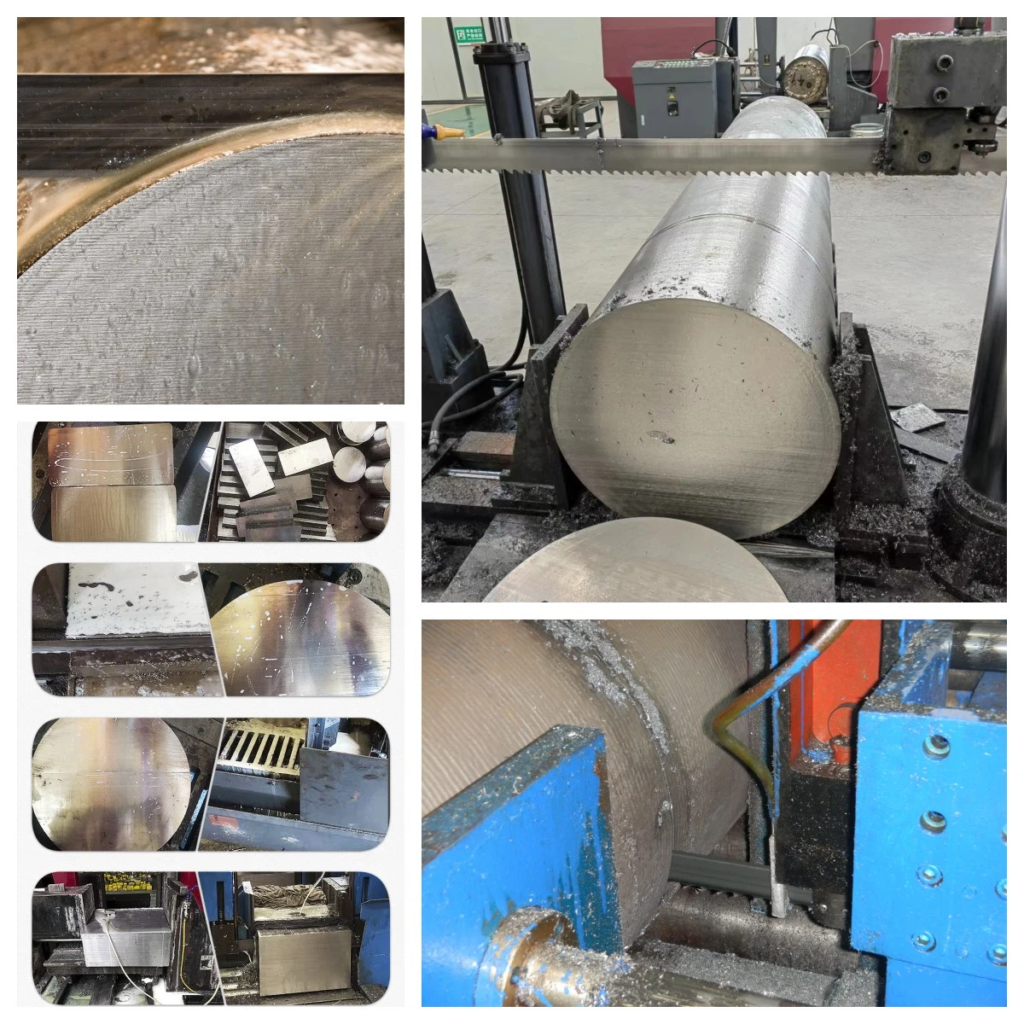Are you curious about how bandsaw blades can revolutionize your cutting tasks? Let me break it down for you in a simple way that makes sense.
A bandsaw blade is a continuous band of toothed metal used in bandsaws for cutting various materials. Its design and features make it ideal for precision cutting.
%[Bandsaw blade image placeholder](%alt with keyword)

Bandsaw blades come in many varieties. Choosing the right one can change your cutting experience for the better.
What are the three main types of bandsaw blades?
Do you ever wonder which bandsaw blade suits your needs? It’s not as confusing as it seems.
The three main types of bandsaw blades are:
- Regular Tooth Blades for general-purpose cutting.
- Hook Tooth Blades for aggressive cutting on thicker materials.
- Skip Tooth Blades to prevent material clogging during delicate cuts.

Regular, Hook, and Skip Tooth Blades Explained
| Type of Blade | Best for | Features |
|---|---|---|
| Regular Tooth Blade | Straight cuts in thin material | Evenly spaced teeth, smooth finish |
| Hook Tooth Blade | Thick material | Larger teeth, aggressive cutting |
| Skip Tooth Blade | Delicate materials | Widely spaced teeth, prevents clogging |
Each blade type works for specific materials. For instance, a hook tooth blade is perfect for hardwood, while a skip tooth blade is better for soft materials like plastic.
How do I know what bandsaw blade I need?
Feeling overwhelmed by the options? It’s simpler than it seems.
Consider these factors: material type, cut precision, and blade durability. Match your blade to the material and the task.

Steps to Find the Right Blade
- Identify the Material: Steel? Wood? Food? Different materials require different blades.
- Decide on Precision: Do you need smooth edges or rough cuts?
- Check Blade Durability: Heavy-duty work needs a sturdy blade.
- Blade Width: Wider blades are more stable; thinner ones cut tighter curves.
When I pick blades for my tasks, I always test a few to see which offers the smoothest and most efficient cut. It’s a small step that makes a big difference.
How thick of wood can a bandsaw cut?
Ever wondered if your bandsaw is up for cutting thick wood? Let me clear it up for you.
The thickness a bandsaw can cut depends on its throat and motor power. High-quality bandsaws can cut wood up to 12 inches or more.

Factors Affecting Cutting Thickness
- Throat Capacity: Determines the maximum height of the cut.
- Blade Strength: Sturdier blades can handle denser materials.
- Motor Power: More power allows thicker cuts.
For thicker cuts, I recommend using a blade designed for heavy-duty work, like a hook tooth blade. It handles stress better and lasts longer.
What is the purpose of a bandsaw?
Why do professionals and hobbyists alike rely on bandsaws? The answer is simple.
The primary purpose of a bandsaw is precision cutting for a variety of materials like metal, wood, and plastic. Its versatility makes it a must-have in workshops.

The Bandsaw’s Key Features
- Precision: Great for intricate designs and curves.
- Versatility: Cuts metal, wood, food, and more.
- Efficiency: Handles repetitive tasks easily.
I often use bandsaws for cutting unique shapes in wood for furniture projects. It’s a time-saver and delivers excellent results.
我的见解!!!!!!!!!!!!
Here’s where it gets interesting. Most people don’t think beyond the blade type, but I do.
The secret to maximizing your bandsaw’s performance lies in blade maintenance. A well-maintained blade cuts faster, lasts longer, and reduces wear on your bandsaw.
Tips for Blade Maintenance
- Clean the Blade Regularly: Remove debris and resin buildup.
- Check Blade Tension: Proper tension prevents uneven cuts.
- Sharpen Teeth: Dull teeth lead to poor-quality cuts.
- Store Properly: Keep blades dry and away from moisture.
I always clean my blades after every use. It only takes a few minutes but saves me hours of trouble later. This small effort pays off with smoother cuts and lower costs.
Conclusion
Bandsaw blades are essential for precision cutting across many materials. Choosing the right blade and maintaining it well makes all the difference.



